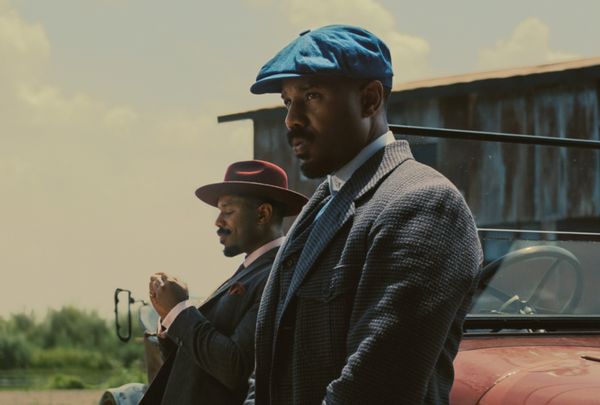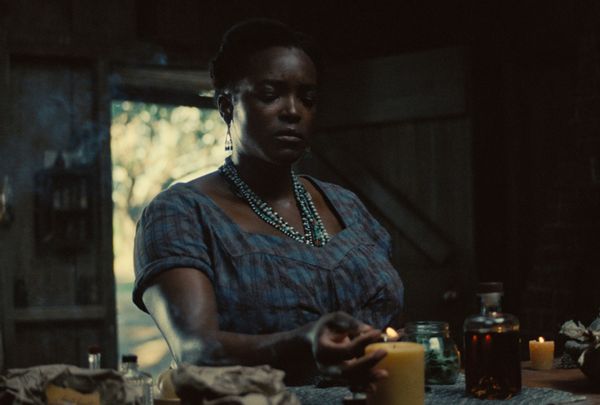
The Trump Administration has declared war on Black history.
By way of executive orders, the administration has taken aim at not only DEI initiatives, but Black history taught in classrooms across the country and at the Smithsonian’s National Museum of African American History and Culture. These executive orders, along with the threat of withholding federal funding, garner compliance from the education community, which is a disservice to Americans of all ethnic groups.
Thankfully, our society has teachers of a different kind—those whose unique talent bring Black history to life on film, teachers like Ryan Coogler.
Last weekend was the release of his newest project, "Sinners," a vampire horror film set in the Mississippi Delta in 1932. "Sinners" debuted at number one at the box office, making $48 million domestically, the highest-grossing opening for an original film released so far this decade. It also received a record 98% movie review score from Rotten Tomatoes.
This past weekend, "Sinners" took in $45 million, grossing $122.5 million in North America and $161.6 million globally since its release 11 days ago.
The weekend success of "Sinners" shows that vampire renderings on film (and television) remain popular among the masses of film and television consumers. It also proves that movies featuring a predominantly Black cast can dominate a big box office weekend, such as the "Black Panther" franchise (directed by Coogler) and "Coming to America." Stars like Will Smith, Denzel Washington and Jamie Foxx have already shown that a Black lead in a movie can dominate a weekend. "Sinners" proves that Black history isn’t a sin and that teachers of Black history aren’t sinners. In fact, "Sinners" unapologetically teaches Black history within its plot, and viewers responded with a box office take of $48 million.

Truthfully, Mr. Coogler has a history of doing so.
In "Fruitvale Station," Mr. Coogler exposed viewers to a portrait of Black male humanity counter to the picture displayed by the power structure culpable in the death of the Black male body. In the "Black Panther" franchise, Mr. Coogler leaned on historical memory to display the innovation, beauty, majesty, and pageantry of African people, countering stereotypes etched in the minds of the masses from those Sally Struthers "Save the Children" commercials. In "Creed," Mr. Coogler not only explored the complexities of Black identity, but he breathed life into a life Hollywood forgot, or only considered as a punching bag to the great white hope, who was Rocky Balboa, Apollo Creed.
In "Sinners," Mr. Coogler takes viewers on a trip to the Mississippi Delta to introduce them to the realities of the Jim Crow South; from the Klan in plain clothes to the Chinese serving Blacks and whites from opposite sides of the streets in segregated stores. Mr. Coogler also introduces viewers to the origins of Blues music. Literary giant Amiri Baraka, in his book "Blues People," explains Blues music as:
“A native American music, the product of the Black man in this country… Blues was a music that arose from the needs of a group… singing to ease their labors or the casual expression of personal deliberations on the world… Blues could not exist if the African captives had not become American captives.”

Mr. Coogler continues his Black history teaching masterclass by bridging the divides between past, present and future in the film’s featured musical piece. He exposes viewers to the lineage of Black music from Africa to America: from a tribal dance to funk grooves that drive the sound of Hip Hop. Images of Sammie, an electric guitar player, a DJ, Mc’s, Crip walkers, twerkers [twerking has its origins in African dance], and Zaouli dancers provide viewers with a trajectory of Black music over time in 90 seconds better than a documentary could.
The scene, taking place in Stack and Smoke’s Jook Joint, was—to borrow from Don Cornelius—the hippest trip in America(n)—history. It is, without question, a masterful moment of art that delivers a lesson that words simply cannot. That it happens within a Jook Joint is no accident.
The Jook Joint or Jooks, similar to honky-tonks or after-hours joints, according to Dr. Katrina Hazzard-Donald (my undergrad professor), were the first secular cultural institution of social interaction, entertainment and quasilegal activity to emerge after emancipation. She explains further in her book "Jookin":
“Their emergence was linked initially to peasant class African American life, and they appeared as soon as Black populations became significant in both northern and southern towns… And like the Blues, the Jook was a secular institution rooted in West African traditions that intertwined religious and secular elements.”
The peasant class of African Americans was whom Langston Hughes affectionately called the Lowdown Folks:
“The people who have their nip of gin on Saturday nights and are not too important to themselves or the community, or too well fed, or too learned to watch the lazy world go round. They live on Seventh Street in Washington or State Street in Chicago, and they do not particularly care whether they are like white folks or anybody else.”
The power and prolific nature of Black music displayed in "Sinners" is a reminder that Black history didn’t start with our enslavement, but with our majestic and mighty civilizations in Africa, and as we liberated ourselves from our enslavement, so too will we be liberated from white supremacy. So, it should come as no surprise that there’s been dirt thrown at the movie in the headlines and on social media.
It may be said that racism has nothing to do with these “critiques.” I wonder if Ben Stiller can change such sentiment with his thoughts.
Maybe the movie is too Black and has too much Black history in it. Maybe there’s fear over Mr. Coogler’s deal to retain rights to HIS movie after twenty-five years. No matter the reasons for the dirt thrown, sales numbers, while a metric for success, cannot tell the entirety of the impact of any piece of art. This is the mistake made when comparing the commercial success of Drake and Kendrick Lamar in measuring impact.
Drake may have the numbers over Lamar, but as Kendrick said to Drake in "Euphoria," “I'm what the culture feelin’.”
In the same way, we shouldn’t expect the Trump Administration to properly interpret Black history or its relevance in the public square; we shouldn’t expect critics who dabble in anti-Black racism to properly interpret the impact of "Sinners," let alone interpret Black culture. If "Sinners" wins an Oscar or a Golden Globe, great. It’s well deserved. Just know that the telling of Black stories never needed white validation.
It still doesn’t.
Ryan Coogler’s "Sinners" is a horror story where white supremacy is Dracula and his spawn come to terrorize Black people. There will be many think pieces exploring the deeper meanings of the symbolism found in this film. But Mr. Coogler's choice to allow Black history to frame a vampire movie gives viewers and critics enough to reflect on, write about, and use as a foundation for future learning.
This isn’t what the Trump Administration had in mind for Easter weekend.







